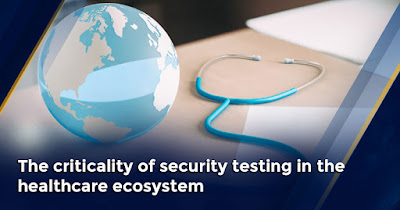At the core of every digital transformation exercise is a software application, which, in consonance with the hardware, runs the system and achieves the desired objectives. However, the software application needs to be updated periodically to address the challenges of the day such as the advent of new technologies or changing customer preferences, among others. Software regression testing helps to identify and assess if the changes made to the software application have met their objectives and/or the changes have created a new issue. For example, a photo-sharing service decides to introduce video compatibility. However, when the new service/feature is implemented, the photo-sharing service takes a hit.
Regression testing is to find out such unintended change(s) and fix it before the software application is released to the customers. Thus, QA regression testing ensures the software application is updated to meet the market/technical/customer requirements and is free of any issues.
Scenarios to conduct software regression testing exercise
There can be scenarios or situations for the QA specialists to conduct regression testing to bring about stability to the software application. The below-mentioned test cases are some of the scenarios that necessitate the conduct of such testing:
· Complex integration test cases
· Functionalities to be frequently used by the users
· Scenarios showing the working of a software application’s core features
· Functionalities to have undergone some recent changes
· Boundary value test cases
· Samples of successful or failed test cases
Why regression testing in software testing be automated?
When changes are made to a software application prior to its release, regressions (resident glitches in a functionality or feature) can get triggered. These can negatively impact the release schedule of the software application and increase the development cost. However, there is one way to accelerate QA regression testing and meet the delivery turnaround time – automation. In fact, manually looking for the unintended changes in the application can be time-consuming and entails engaging the testers for extended periods of time. And since testing in such cases can be repeatable in nature, automated regression testing can reduce the time and effort of testing. Since regression testing checks the functioning of the existing features of a software application, it is important to have the maximum test coverage courtesy an automated regression testing strategy.
Factors to consider while deciding a regression testing strategy
QA specialists should consider the following factors while contemplating the decision to pursue automation in regression testing.
# Is test automation suitable for the project?
Test automation, including when used in regression testing, is not suitable for every project. For example, short-term and small projects such as developing small mobile apps, do not need automation to test regression as the time to write automated test scripts may exceed the total timeframe of the project. Hence, automation in regression testing should be for projects that are of large or medium scale, comprising several sub-systems such as enterprise applications and multi-user gaming software with many releases.
# When to write the automated test scripts?
It is not possible to write scripts for automated regression testing beforehand for the process depends on the manual test cases that have found bugs in the past consistently. Since such manual test cases are not available at the start, testers should proceed with automation when stable software modules are present.
# Which are the tests to be automated first?
Regression test scripts may be developed based on repeatable test cases wherein bugs were found consistently through manual testing. Such tests cover core functions and exceptions like boundary conditions or negative test cases impacting other functional areas of the application.
# Quantum of regression testing to be automated
For most software applications around 70-90% of manual test cases that have detected bugs consistently can be automated. The rest 30% are the manual cases that have detected bugs inconsistently or showed false outcomes.
Pitfalls to consider while conducting automation of software regression testing
Test automation experts should keep the following pitfalls in mind while devising an automated regression testing strategy:
· Review and maintain regression test suites to ensure the efficiency, accuracy, and speed of testing
· Do away with false positives generated by automated regression testing suites by verifying the results with a manual smoke test
· The complexity of automating any regression testing process should not come in the way of its implementation
Conclusion
Since regression testing is crucial to ascertain the proper functioning of existing or old functionalities when changes are made to the application, it is crucial and should not be overlooked. Through automation, any regression testing company can maximize test coverage using a minimal number of test cases thereby saving time and cost significantly.
Article Original Source:
https://dev.to/


